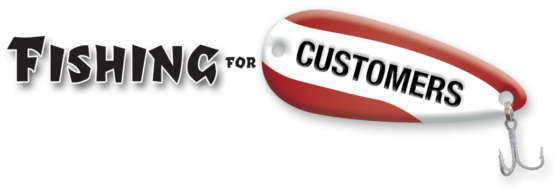I’m uncomfortable with most clever or creative advertising. Clever and/or creative is dangerous, because it’s too easy to get sucked into the creativity, and forget that our purpose is communication and persuasion.
If your attention is drawn to the cleverness of the ad, rather than to the product, it’s a bad ad.
Today, however, that same warning applies to dull ads. Our purpose is communication and persuasion. You’ll do neither by boring people.
About a week ago I received a phone call from a representative of a nationwide yellow pages publisher, who said “Hi, Chuck. I’ve been handling Abraham’s yellow pages advertising since he first opened his business fifteen years ago. When I called him today he gave me your number and said I should deal with you. His ad is ready to go.”
I asked him to fax me a copy. When he did, I rejected the ad, and told him I’d submit a different one later that day.
“Chuck,” he said, “this ad’s ready to go. You don’t understand yellow pages. What’s important in yellow pages is size and position. The bigger the ad and the closer to the front of the category the more likely it is to be read.”
A Larger Ad Will Be Noticed
Is he wrong? No, not completely. When all other factors are equal (as they never are in real life) a larger ad will be noticed more easily than a smaller ad. And there is some evidence that being listed earlier in the category improves the odds of being noticed, too.
However, a bad ad won’t be read regardless of size or postion. Adding color won’t ad to your persuasive ability, and getting noticed does not directly lead to persuading anyone to buy. Size, position, or color don’t communicate a message.
You’ll recognize a bad ad by it’s focus.
Bad ads are about the advertiser. Good ads are about the customer. A bad ad says “This three stone diamond pendant is only $299 just in time for Mother’s Day.” A good ad says “She’ll kiss you like you’ve never been kissed before.”
What’s the most important part of any ad? The headline. It draws attention and naturally leads the reader into the rest of the ad. At least, that’s how it’s supposed to work.
The ad which had been faxed to me used my client’s logo as the headline. Can’t you just see a potential customer’s eyes glazing over as she sees page after page of yellow pages ads with business name after business name as the focal points of those ads? Unfortunately this kind of design is all too common in the yellow pages.
Think about this: people go to listing media when they have a problem to solve. They go to the business category that seems most likely to address their problem. Page after page of business names makes the customer do all of the work. And make no mistake, trying to figure out whether your business can help IS work.
The name of your business doesn’t say anything of interest to a customer searching for a solution to her problem.
Make it easy for a prospective customer.
Make your headline promise a big benefit, which will naturally pull the reader’s eyes to the rest of the ad. Once the customer is confidant that you understand her immediate need, include your name, address, and phone number – at the bottom, where they belong.
How does this story end? I re-wrote the ad.
The headline now promises a benefit to the reader. The information that the client had been “serving the community for fifteen years” was replaced with body copy and an illustration which expands on that promise. Finally the client’s logo was reduced to a reasonable size, and his address and phone number were placed at the bottom of the ad, where they become the last thing a potential customer reads.
If she’s been persuaded, she’ll now pick up the phone and call. Is there a better outcome when you’re fishing for customers?
Your Guide,
Chuck McKay
 Your Fishing for Customers guide, Chuck McKay, gets people to buy more of what you sell.
Your Fishing for Customers guide, Chuck McKay, gets people to buy more of what you sell.
Got questions about making Yellow Pages advertising more effective? Drop Chuck a note at ChuckMcKay@ChuckMcKayOnLine.com. Or call him at 304-523-0163.


